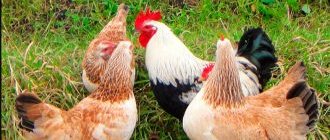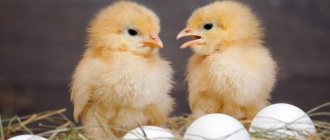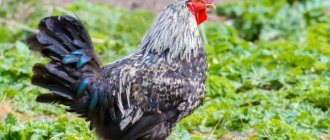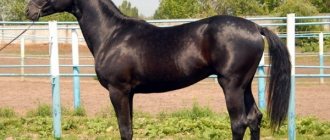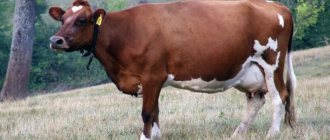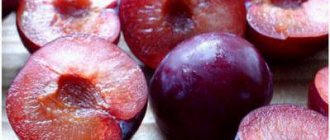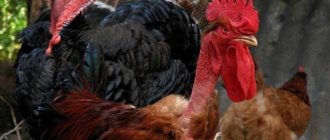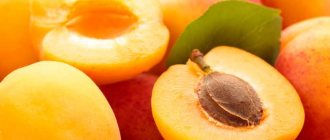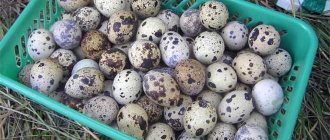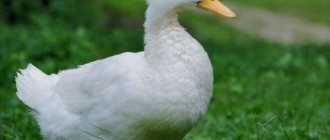1 693
no comments yet
0
Author of the article
Rasskazov Pavel
Reading time: 2 minutes
Young poultry obtained from crossing meat-combined lines for growing for meat and characterized by rapid weight gain are called broilers.
Typically, such crosses are 20-30% larger than purebred birds. At the age of 60 days, young broilers can be sent to slaughter: their weight during this period reaches 1.5-2 kg.
Broiler meat is considered a dietary product. It is non-greasy, soft, tender. Can be used to feed children, the elderly, during illness and recovery periods.
Advantages
The main distinguishing feature of colored broilers is their high productivity. We are talking about both chicken meat and egg production. Compared to conventional breeds, the described type of bird is characterized by intensive weight gain, which is valued by many breeders. In 2 months, one broiler can gain 2.5 kg in weight, gaining 50-60 grams of live weight per day. Consequently, the money spent on its purchase will pay off within 2-3 months. By simple calculations, you can understand that at 3 months the male will weigh 7 kg, and the female will weigh about 4. But broilers are rarely kept until such a time; They are slaughtered upon reaching 2 months of age.
Taking into account the fact that from March to October one laying hen is capable of hatching about 200 chicks, the final weight of two-month carcasses received from slaughter will be 350-400 kg (live weight).
Colored broiler - is it worth breeding in a summer cottage?
Colored broilers are distinguished by their unpretentiousness, high productivity and early maturity, so purchasing them can be a profitable investment. Another important advantage is the low cost of feeding them, which allows breeders to save a lot of money.
An important feature of almost all breeds of colored broilers is their good adaptation to Russian climatic conditions. That is why there is no need to build massive heated chicken coops, because they are quietly kept and lay eggs in average temperature conditions. Of course, in winter you will have to provide a heating system, but this is necessary for breeding not only broilers, but also ordinary chickens.
Colored broilers are well adapted to Russian conditions
If we compare them with ordinary chickens, broilers are characterized by more intense weight gain. This circumstance is appreciated by many breeders, no matter where they operate. In other words, colored broilers are equally popular for owners of ordinary summer cottages and private farmsteads, as well as among entrepreneurs for whom profit is the main goal in keeping broilers. There is no doubt that they will bring benefits, because they gain weight very quickly, with a fairly high egg production. On average, in two months a broiler can gain up to 2.5 kilograms. These circumstances indicate that the purchase of broilers can pay for itself in 2-3 months.
A colored broiler pays for itself in 2-3 months
Is it profitable to grow?
If you consider keeping colored broilers from an economic perspective, you can understand that it is profitable. Evidence of this, in addition to the previously listed factors (rapid weight gain, excellent egg production, high productivity), is:
- simultaneous, friendly growth and development of young animals;
- safety of almost the entire brood, which avoids financial losses;
- intensive (compared to ordinary chickens) puberty;
- low cost of the resulting meat;
- a high percentage of dietary white meat in the total mass of the slaughtered carcass.
And, of course, it is worth mentioning the richness of the plumage with a varied number of color shades.
Progenitors and subspecies
Redbrow chickens are the result of crossing the Cornish breed with Malaysian fighting cocks.
From their ancestors from Malaysia, the birds inherited the massive size of their bodies. An interesting fact is that the plumage of Red Bro chickens is not the work of breeders, but a random mixing of genes.
Redbrown crossbreeds were created to produce high-quality meat and eggs. Today the breed is fully formed. At European poultry farms it is divided into two subspecies: redbro C and redbro M. The division is based on minor differences in productivity indicators.
The subspecies are grown by French and American breeders.
Content Features
This bird is unpretentious in keeping, but farmers should still adhere to some rules, namely:
- maintain optimal temperature conditions (+15-+25оС), preventing the indicator from decreasing to +5оС. For young animals, the temperature at their place of stay should be +25°C;
- eliminate drafts at the bird’s location and seal existing cracks;
- Birds can be kept both in cages and on the floor, on a bedding of straw and sawdust.
The chicken coop needs to be disinfected once a year, and routine cleaning is required once every 2 days. The room where colored broilers are kept must be clean and dry. This is one of the indispensable conditions for high-quality growth of poultry and the prevention of diseases.
There should be no more than 10 chicks per square meter; a large cluster can be destructive for the young.
Conditions for keeping broiler chickens
In order for broilers to develop fully, it is necessary to provide them with comfortable conditions.
Setting up a chicken coop
To build a chicken coop, you can use any traditional materials: brick, wood, cinder block. You can cover the walls with plywood or metal sheets. The height of the walls must be at least 2 m.
Before you begin arranging a chicken coop for broiler chickens, you need to calculate the area of the room. It will depend on the number of individuals. For 1 sq. m there should be no more than 10 chicks. If cage keeping is provided, then in the same area, depending on the number of floors, you can place 2 times more chicks.
Before moving the chicks into the chicken coop, it is necessary to carry out the following preparatory measures:
- Thoroughly disinfect the room. The walls must be plastered and coated with lime, which suppresses the growth of microbes. If floor maintenance is planned, the floor is also covered with lime.
- Organize a high-quality ventilation system. Ammonia accumulation and improper indoor humidity levels increase mortality. In a broiler chicken coop, the humidity should be maintained between 50-60%.
- Lay a covering on the floor. It should be dry and loose. You can use sawdust or straw. You need to pour it in a layer of up to 10 cm.
- Plaster all cracks that are sources of drafts. It is not recommended to cover them with rags or use other temporary options, since birds, out of curiosity, can peck at this section of the wall and damage their tongue or beak.
- Install heaters and incandescent lamps. Regardless of the time of year, in the first weeks of broiler life the temperature in the room should be maintained within 30 degrees. In the future, as the slaughter date approaches, it can be lowered to 20 degrees.
Accommodation options
There are two main options for arranging broilers in a separate room: floor and cage.
The floor-standing option is easier to implement and organize, and is also cheaper, but it has the following significant disadvantages compared to the cellular one:
- irrational use of space;
- increased costs for heating the chicken coop, electricity and ventilation;
- high degree of pollution, which increases the risk of developing diseases;
- the need for more frequent cleaning of the premises.
When raising broilers in cages, the temperature regime should be higher than when raising broilers on the floor. In this case, this indicator should be no lower than 34 degrees on the upper tiers.
It is worth making a choice in favor of cage housing if the number of livestock is large.
The premises must have an equipped sewage drain. Also, the chicken coop must have lamps for lighting. Near the main indoor area, an enclosure for walking should be built, fenced with a net.
Necessary equipment
For complete equipment of broiler chickens the following is required:
- perches: each chicken requires a perch 30 cm wide;
- vertical drinkers (for chickens under 3 weeks of age);
- frontal drinkers (for broilers aged 3 weeks and older);
- feeders;
- heating lamps of 100 W each;
- feed bunker;
- cage batteries (for the cage method of raising birds);
- heat fan (when keeping poultry using the floor method);
- compartment for storing food.
In order to save money, you can make feeders and drinkers with your own hands. The simplest drinking bowl is made from a five-liter bottle of water placed in a wide bowl or basin. The feeder can be made from a large plastic bottle, cut in half.
Stern
Feed for raising broilers can be purchased on the market. As a rule, they optimally combine all the microelements necessary for rapid growth and medicinal components necessary for the prevention of possible diseases.
Depending on the period of poultry rearing, feed is divided into:
- starting,
- height,
- finishing.
You can prepare the composition for feeding colored broilers yourself. You will need the following ingredients:
- wheat dirt (crushed grain) – 0.2 kg;
- corn dirt – 0.4 kg;
- barley turd – 0.05 kg;
- oatmeal - 0.1 kg;
- sunflower cake – 0.150 kg;
- fish meal – 0.06 kg;
- baker's yeast – 0.002 kg;
- low-fat cottage cheese – 0.2 kg.
The components should be mixed together and yogurt should be added to them. Calculation of the mixture for one chicken is 10-25 grams.
It is recommended to add any greens (cabbage leaves, young nettles, etc.) to the diet of an adult bird. The vitamin complex can be supplemented with chopped carrots; to increase calcium, crushed eggshells of raw or boiled eggs are recommended.
Along with food, small gravel or shells should be added to the feeders - components necessary for proper digestion.
Description and characteristics
Hens and roosters of this species have an appearance characteristic of meat breeds; they are not aggressive and friendly.
Next, we will consider in more detail the exterior and character of the breed.
Appearance and physique
In general, the breed has a rather mediocre appearance and is typical of all broilers. The head is small, decorated with small earrings and a red comb, the beak is yellow. The eyes are colored amber, red or orange depending on the plumage.
The physique is powerful, large, squat. The back is flat, the chest and belly are well defined and convex. The legs are low, thick, set wide, the color of the skin is yellow. The color of the plumage can be red, black, fawn and white, but the most common is red. The plumage is quite rigid, dense, and fits well to the body, thanks to which these birds can tolerate even sub-zero temperatures, unlike most broiler breeds.
Temperament
Chickens of the Sasso breed are distinguished by a calm, docile, peaceful disposition. But the disadvantage of such a peaceful nature is the birds’ excessive timidity and susceptibility to stress. If a breed is raised not only for meat, but also for eggs, low stress resistance can negatively affect productivity.
But in the overwhelming majority of cases, this breed is bred to produce tasty, dietary meat, and the birds’ timidity does not affect weight gain in any way.
Hatching instinct
Like other hybrid breeds of chickens, the Sasso's brooding instinct is poorly developed. Even if the hen begins to hatch the eggs, she often does not finish what she started, which leads to the death of the chicks. The most common method of raising Sasso chickens is incubation.
RedBro breed
Colored broilers are represented by several breeds. The article lists the most popular ones. First of all, this is RedBro - a derivative of Cornish and Malaysian chickens. RedBro's homeland is Foggy Albion. Representatives of this breed of colored broilers have developed muscles and strong legs. The plumage color is mostly red or red-brown, although white birds are rare.
Colored broilers of the RedBro breed are unpretentious in maintenance and easily adapt to the climate and the specifics of domestic feed mixtures. They are characterized by good health, so they can be raised without the use of antibiotics, as is typical for other broiler breeds.
The meat is fibrous, the taste is at a high level. Hens begin to lay eggs at 6 months of age, the average annual production is 300 eggs. At six months the weight of a laying hen is 3 kg, and that of a cockerel is 4.5 kg.
Productivity
Body weight gain and egg production directly depend on the quality of nutrition and care. The better the food, the greater the weight gain. This is an important indicator for broilers. Many breeds gain up to 3 kg by the 4-5th month of life. This is a good meat indicator. As soon as the chicken reaches 2.5 kg, it can be sent for slaughter.
See also
Description of the Kuchinsky Jubilee chicken breed, breeding and egg productionRead
If you leave it until adulthood, the quality of the meat decreases slightly. It gets tougher. However, when cooked correctly, it is no different from a young chicken.
The number of eggs is affected by bird care. It is better to protect laying hens from unnecessary stress, in which case egg production is greatly reduced. It is also necessary to carry out preventive examinations against ticks and diseases. A sick bird lays fewer eggs. For laying hens, the same nutrition is left as for meat animals. But you can add more vegetables to your diet.
Important! Broiler chickens are easy to care for and can be raised by beginning farmers .
Chickens Master Gris
Master Gris is a French colored broiler, unpretentious and hardy. The plumage of the bird is predominantly white or with a mixture of gray tints. The average weight of roosters at 2 months of age is 7 kg, and that of laying hens is 4 kg. High survival rate of young animals – 98.
French colored broilers grow well in cages, in aviaries, and in conditions of partial freedom. Females begin to lay eggs at about 4 months, producing 280-300 large eggs per year.
The meat is tasty, the fat content is low, which benefits supporters of various diets. A good increase in muscle mass can be achieved by feeding mixtures with a high protein content.
Advantages
The French breed has several advantages that distinguish it from other species:
- high resistance to all chicken diseases and various infections, so young animals practically do not die;
- relatively low cost of chickens, which is beneficial for mass rearing;
- gain weight quickly - about 60 g per day;
- meat is valued for its delicate taste and juiciness;
- not demanding in feeding and maintenance.
Colored broilers are highly productive breeds of chickens; if all breeding rules are followed, laying hens can produce up to 3 hundred eggs. The first eggs appear at the age of six months.
Broiler Sasso has several varieties, each of which has its own distinctive features and qualities. Below is a description of the most famous colored broilers, which are successfully raised in many countries around the world.
The basis for the development of this hybrid was two breeds - Malaysian and Cornish. The red-brown species has a massive build and strong legs. It is characterized by rapid weight gain - at six months of age, females weigh about 3 kg, males - 4.5 kg. Females are predominantly bred. laying hens lay eggs daily and are prized for their good productivity. They are unpretentious in care and maintenance - they eat all kinds of standard food and in small doses. Prized for its high quality meat.
Master Gris
Sasso Master Gris colored broilers were bred in France. Home Characteristics of the breed include several features:
- feathers are white, sometimes of a grayish tint;
- valued for good egg production and tasty meat;
- the French broiler has good endurance, ease of care and the ability to fully develop without daily walking;
- in young individuals maturation occurs quickly - the hen gives the first egg already at 4 months of life;
- at four months of age, females reach 7 kg, and males - 4 kg;
- The meat is juicy, tasty, suitable for dietary nutrition.
The French colored broiler is one of the best varieties of Sasso breeds.
Hungarian giant
Hungarian Sasso colored broilers have a massive body. Females are red-brown in color, males have a darker color on the back and contain black feathers on the tail. The skin on the head is red, bare, with a small crest.
Red broilers are so easy to care for that even a novice poultry farmer can raise them. The plumage is thick, so this breed tolerates cold and sudden temperature changes well.
Breeding this breed involves providing balanced feeding, otherwise you should not expect weight gain from these birds. The basis of the diet is protein-enriched food. The best feed is factory compound feed. Green food is given only as a supplement.
Red laying broilers grow quickly and produce their first eggs at four months of age. At three months of age, body weight is about 2 kg.
Hungarian broilers have a massive body
Foxy Chick
It has orange plumage, a massive build and thick legs. Bred to produce tasty meat and eggs. The advantages include unpretentiousness in content. At two months of age the bird reaches 1.5 kg of weight.
Foxy Chick grows well in the backyard and is kept in a flock with backyard chickens.
Naked Neck
colored Sasso broilers come in different colors, tolerate low temperatures well and have consistently high egg production, regardless of the season.
The bare-necked breed lays eggs well and is prized for its tasty and juicy eggs. chickens are highly resistant to disease and grow rapidly.
This species needs good nutrition and regular walking.
Breed Cacco
Cacco colored broilers were also bred in France and are of the meat type. They are characterized by high growth rates, the main component of which is a properly formed nutritional diet.
External characteristics of the Cacco breed:
- pronounced abdomen and chest;
- flat back;
- the plumage is very different - blue, black, white, red;
- The feather is rigid in structure.
The weight of an adult rooster is approximately 5 kg, and that of a female is about 4 kg. Egg production is at an average level - up to 120 eggs per year. According to reviews, Cacco colored broilers have the following advantages:
- speed of maturation (2-3 kg of live weight per month);
- high taste of meat;
- strong immunity;
- high percentage of survival of young animals;
- low cost of meat.
Females are characterized by low maternal instinct and can give up incubating eggs at any time, which causes the death of the brood. Therefore, this breed is bred mainly in incubators. The price of a day-old chick is approximately 70 rubles.
The best broiler breeds with descriptions
Among the meat breeds, there are record-breaking chickens, which are preferred by both large poultry farms and small farms. A list of the best individuals with a description is further in the article.
ROSS-308
The bird is distinguished by a large body with well-developed muscles, with a wide and convex chest. Widely spaced limbs are distinguished by large hips, the skin on the paws is yellow. The head is small relative to the body, with a red leaf-shaped crest. The earrings are poorly developed, the beak is curved, yellow. The plumage is snow-white, thick and dense.
Productive characteristics:
- egg production - 200 pcs. per year, egg weight - 60 g;
- meat yield - 74%;
- age at slaughter - 2 months;
- carcass weight - 3–5 kg;
- chick survival rate is 98–100%.
COBB-500
Chickens are large in build, with a voluminous sternum and short but powerful legs. The wings are tightly pressed to the body. The head is small on a long neck, crowned with a bright red crest and small earrings of the same color. The beak is gray-yellow, massive. The plumage is white, loose, the skin on the paws is gray-pink.
Important! Improper maintenance of COBB-500 can provoke pecking in young animals, even leading to death. Productive characteristics:
Productive characteristics:
- egg production - less than 100 pcs. per year, egg weight - 58 g;
- slaughter for meat - 40–60 days;
- carcass weight - 3 kg;
- meat yield - 73%;
- chick survival rate is 94–97%.
Gibro-6
Cross has a slender build, not too protruding chest and long limbs. The femoral part is well defined, the skin of the paws is yellow. The medium-sized head is decorated with a bright red large crest and long red earrings. The plumage is white, close to the body.
Learn how to prepare feed for broilers.
Productivity:
- egg production - 150 pcs. per year, egg weight - 60 g;
- age for slaughter - 1.5–2 months;
- carcass weight - 2 kg;
- meat yield - 72%;
- chick survival rate is 98%.
Broiler-61
The large body has a wide, massive back and a convex chest. The plumage is white, slightly loose. The comb and earrings on the small head are red and poorly defined. The skin on the paws is grayish-yellow.
Important! At 5 weeks of age, young animals are limited in food; their fragile bones may not be able to withstand heavy weight, which will lead to problems with the limbs. Productivity:
Productivity:
- egg production - 160 pcs. per year, egg weight - 62 g;
- age for slaughter - 1.5 months;
- carcass weight - 1.8 kg;
- meat yield - 80%;
- chicken survival rate is 98%.
Hubbard F-15
One of the largest representatives of meat breeds. Powerful body, on widely spaced legs with voluminous hips. Wide back, small head with poorly developed crest and red earrings. The beak is short but strong, curved, and pale yellow in color. The plumage is snow-white, the skin on the paws is pale pink.
Hungarian Giant
A prominent representative of colored broilers is the Hungarian Giant. In Russia, this breed is quite popular, if only because it has rich feather cover, with which it can easily tolerate temperature changes. This is mentioned in many reviews from amateur birders.
Laying hens are distinguished by a developed maternal instinct; they sit in the nest for the entire required period, which is a determining factor for breeders who decide to breed offspring naturally. In the future, the females continue to care for the offspring that are born just as responsibly.
FAQ
When to slaughter colored broilers
Most often, experienced farmers recommend slaughtering colored broiler chickens at the age of 80 days. However, such a rule is not mandatory. For profitability purposes, some entrepreneurs advise slaughtering when the weight of the bird increases to 2.5 kg.
Why broilers don't stand up
Broilers fall to their feet
Naked Neck
Translated from English, the name of the breed means “bare necks.” Indeed, there is no plumage on the neck of these birds; everything else is characterized by different colors. Representatives of the breed have elongated shins, a wide back and chest. Such chickens are common in Germany, Romania, and Hungary.
Tolerant to low temperatures. The survival rate of young animals is low, so it is recommended to purchase broiler chickens from farms with a good reputation.
Foxy Chick
Chickens of the Foxy Chick breed are meat-egg producing. Considered ideal for home keeping:
- safety of chickens - 100%;
- egg production on average up to 250 eggs;
- egg weight up to 70 grams, cream shell;
- chicken live weight – 4 kg;
- live weight of a rooster is up to 7 kg.
In addition to good productivity, chickens have a beautiful appearance. The color of the plumage can vary from light red to rich brown-red. A bright, large bird is simply a decoration for the yard.
Diseases and drugs
The causes of poultry diseases are varied. This may be high humidity in the room where the chickens are kept, or low temperature. Installing a heater and additional ventilation will help solve this problem. But if a bird begins to cough, you should urgently take action and save the bird with medications. These are Baycox, Tetramizole 10, Enroxil, Metronidazole. It is important to follow the dosage prescribed in the instructions.
"Tetramizole" is also recommended as a prophylactic agent. Its action is aimed at destroying helminths.
Baycox is used to treat coccidiosis. The drug is capable of destroying species and strains that have increased resistance to other anticoccidial drugs.
"Enroxil". The action of this remedy is aimed at treating diseases caused by bacterial infections and viral microorganisms.
Metronidazole is an antiparasitic drug characterized by a pronounced antibacterial effect against many common diseases, including:
- trichomoniasis,
- coccidiosis,
- histomoniasis.
This antibiotic can also be used for prophylactic purposes.
Common diseases
What can they hurt?
Breeders have bred redbred chickens that are resistant to various chicken diseases. However, in inappropriate living conditions, outbreaks of certain diseases are possible.
Typhoid: a contagious disease transmitted by airborne droplets. Chickens contract the infection through spoiled food. Symptoms: severe nausea, diarrhea, lack of appetite, weakness. Biomycin is used as treatment.
Coccidiosis: birds are infected by parasites called coccidia. Young animals are susceptible to the disease. Birds develop diarrhea and fever. Birds are treated with furagin, adding healthy and sick chickens to their food and drink.
Pasteurellosis: a sign of infection is the blueness of the earrings and comb of chickens. Secondary symptoms: diarrhea, mucus discharge from the beak, swelling of the limbs. Treatment occurs by disinfecting the chicken coop and using sulfa drugs.
Prevention
To ensure that the flock of redbred chickens is healthy and strong, preventive measures are regularly taken.
Periodically disinfect the chicken coop with a 2% caustic salt solution. The poultry house is kept clean and tidy. Regularly change the water in the drinking bowls and clean the feeders from food debris. Used litter is replaced with dry and fresh litter.
Possible problems during cultivation
Sometimes a poultry farmer may observe that a colored broiler begins to limp. Leg problems are quite common in this bird species and can be caused by several factors:
- poor quality of feed,
- imbalance of mineral content,
- lack of calcium,
- mold indoors.
The lack of calcium can be compensated for by adding shells, chalk, limestone or bone meal to the food.
Also, one of the problems that poultry farmers face and mention in their reviews is the slow growth of colored broilers. This problem may be caused by the following circumstances:
- too large walking area. This is unacceptable for broilers, since the bird must be sedentary most of the time in order to fully gain live weight;
- non-compliance with recommended temperature values;
- lack of protein in the diet, which negatively affects muscle gain.
According to breeders, the saddest factor when raising colored broilers is the death of chicks, which can be facilitated by the following circumstances:
- poor ventilation of the poultry house and poor lighting;
- high humidity and dirt in the room;
- diseases – coccidiosis, intestinal infections;
- poor quality nutritional diet;
- failure to receive special vitamins after hatching by young animals.
It is worth noting that among colored broilers there is such a phenomenon as pecking each other. It occurs due to a lack of vitamins and minerals in the feed, as well as excessive illumination of the poultry house.
What to look for when purchasing
All broilers differ in the rate of weight gain and skin color. The latter are of two types: yellow-skinned and white-skinned. The former are more profitable when sold, and therefore it is worth giving preference to them when feeding chickens for sale. If the bird is cooked exclusively for itself, there is no difference between them.
When choosing broilers, you need to pay attention to the following signs:
- Young animals should be active and energetic, run well, and stand firmly on their paws. If a chicken constantly falls or sits in one place, eats little and does not show any activity, there is a high probability that it will die soon;
- Appearance also matters: the bird’s belly should be firm, toned, but not bloated. In a calm state, its wings should fit snugly to the body, not puff up or “sag”. Loose skin at the front usually indicates indigestion. It is also worth examining the umbilical cord (it should not bleed) and the “butt” (it should be clean). If there is droppings left on the chick's back, it may provoke other birds to try to peck it off;
- The eyes of broilers should be shiny and lively, not cloudy, without pus or any plaque;
- The coloring of the paws and beaks of broilers is also different: it is bluish-gray, with different shades;
- Healthy chicks respond well to sound: to check the reaction, you need to put them in a box and knock on the wall. The chicks should immediately react to the source of the sound and rush towards it;
- Conditions of keeping and vaccinations: of course, it is unlikely that you will be able to find out where the chicks lived in the first days, but it is worth asking about vaccinations. Most often, chickens die precisely because of the lack of necessary vaccinations;
- Price: Good broilers will cost a lot. It is worth inquiring in advance about the cost of chickens from good breeders and focusing on it. Many owners prefer to get rid of illiquid assets, significantly reducing the cost. However, having bought such chickens, you should prepare for the fact that most of them will most likely die quickly.
When purchasing, it is important to remember that you have to breed broilers: you need to take both boys and girls. You can tell them apart by the length of the feathers on their wings.
To do this, you need to lightly pull the chick's wing and straighten it: roosters will have feathers of the same length, hens will have a row of long ones and a row of short ones.
Broiler chickens are used exclusively for meat production. They practically do not lay eggs, although they are diligent, but they are able to actively gain muscle and meat weight. However, it is worth noting that it is impossible to demand from chickens a sharp increase in weight, which sellers promise (up to 2 kg per month), without adding steroids and other not very useful components. It is better to wait a little and let the bird grow to get a large enough carcass.
Breeding and caring for chickens
Redbro chickens are excellent for breeding. But for this, it is recommended to purchase day-old chicks from conscientious poultry farmers, the cost of which varies within 50 rubles per individual. It is also acceptable to use eggs for an incubator. If the farmer does not want to use hens for rearing, it is better to place the eggs in an incubator. But for this it is important to follow certain rules so that the survival rate of chicks is high:
- Choose eggs of the same size; they should be free of any defects, including contamination. The eggs are wiped with a rag previously soaked in potassium permanganate.
- It is advisable to place eggs in the incubator in the evening to increase the likelihood of babies being born not at night, but during the day or in the evening.
- The humidity level in the incubator should not be less than 75%, and the temperature of +39 degrees is the indicator for egg content in the first 11 days.
- For the next 7 days in the incubator, the air temperature should be +38.5 degrees, humidity - up to 50%.
- For the remaining three days, the eggs in the incubator are kept at temperatures up to 37.5 degrees.
At the last stage, be sure to open all ventilation ducts in the room, which will ensure good ventilation.
The color of born chicks is light brown, their weight is about 40 grams. They are able to quickly gain weight. In just 1 month they gain about 1 kilo in weight. The hatched chicks are not yet very susceptible to external conditions, which is why the farmer needs to create comfortable conditions for them. In order for the birds to get stronger and adapt faster, follow these recommendations:
- At first, keep the babies in a box with warm bedding on the bottom. On the first day the temperature should be 30-32 degrees. Then it is reduced weekly by 2 degrees. By the 30th day of birth, chicks must be kept at a temperature of 18 degrees.
- A prerequisite for chicks in the first two days is round-the-clock lighting. Then they will have enough lighting for 13-14 hours.
- Babies are fed in the same way as broiler chicks.
It is unacceptable to start feeding chickens solid food too quickly - this can cause digestive problems.
Pros and cons of Redbro
The Redbro breed has many advantages, which is why they are especially appreciated by farmers who choose the breed for breeding.
The following qualities of animals are distinguished:
- Precocity. Already at 5 months, birds reach sexual maturity and begin to actively work. They often produce up to 300 medium-sized eggs per year. But some poultry farmers have noticed that white broiler chicks grow much faster than Redbro. But at the same time, red birds consume less food.
- Good adaptability to any conditions. Birds of this breed are able to acclimatize anywhere. The only difference between a free-ranging chicken is that its meat is much tastier than that of a bird kept in a confined space.
- Unpretentiousness in food. Birds are able to tolerate local feed very well. For this reason, the breed is considered easy and simple to breed.
- Frost resistance. At a temperature of -5 degrees, birds can walk outside without any harm to their productivity.
- Fast shedding. The molting process in Redbro birds is faster and less painful than in representatives of other breeds.
- Endurance and good health. Redbros rarely suffer from colds and do not require many vaccinations.
- Great character. Representatives of this breed have a calm temperament, which is why they are kept with birds of other breeds. Individuals do not show aggression either towards animals or towards their owner.
The breed has no significant disadvantages. The only negative quality is that they look like ordinary poultry, which is why unscrupulous sellers often deceive buyers.
Reviews
According to farmers, the advantages of the breed include:
- Excellent meat quality, good taste combined with an optimal amount of protein. The product turns out to be dietary and truly healthy.
- Laying eggs in large volumes compared to other broilers. The universal breed allows for the formation of both meat and egg stock.
- High rate of weight gain. Intensive development of chickens is beneficial for farmers selling meat.
- Ease of adaptation to different living conditions.
- Livestock survival rate is above average. When hatching by laying hens and in an incubator, the indicators are approximately the same.
- Attractive appearance. Both roosters and hens look quite aesthetically pleasing, become a real decoration of the yard, and have a short molting period.
- Unpretentiousness in choosing a diet. There are no specific needs for expensive and rare feed.
- Frost resistance. They can easily endure walks at -5 degrees, continuing to maintain their productivity.
- Strong immune system. When properly maintained, birds are well protected from infections; livestock vaccinations are done only in the event of an epidemic.
Redbred breeds have virtually no disadvantages - the cross was bred based on the need to obtain perfect livestock.
But since without knowledge of the specific phenotype it is quite difficult to separate purebred chickens from ordinary Russian laying hens, the volume of purebred sires and young stock is difficult to reliably estimate.
This factor is often taken advantage of by unscrupulous sellers, so you should be as careful as possible when purchasing.
Bird character
Redbro, despite its impressive size, is a fairly peaceful chicken. Both roosters and hens have a non-conflict character and get along well with representatives of other breeds. Therefore, the chicken can easily be kept in a chicken coop with other breeds.
It is worth noting that this is a rather freedom-loving bird. Yes, you can keep her in a cage, but it is still recommended not to do this. Ideal conditions for Redbro are a spacious chicken coop with the opportunity to walk outside (in the backyard).
Advantages of the breed and its disadvantages
Owner reviews mention the following advantages of Redbro chickens:
- Strong immunity.
- Intensive weight gain.
- Dietary qualities of meat products.
- Good egg production.
- Peaceful behavior.
- Endurance.
- Beautiful appearance.
However, in addition to the advantages, representatives of the breed also have negative aspects:
- Pure stock cannot be bred at home. Therefore, young animals need to be purchased from trusted breeders.
- Unscrupulous sellers pass off outwardly similar, but less productive hybrids as Redbro.
